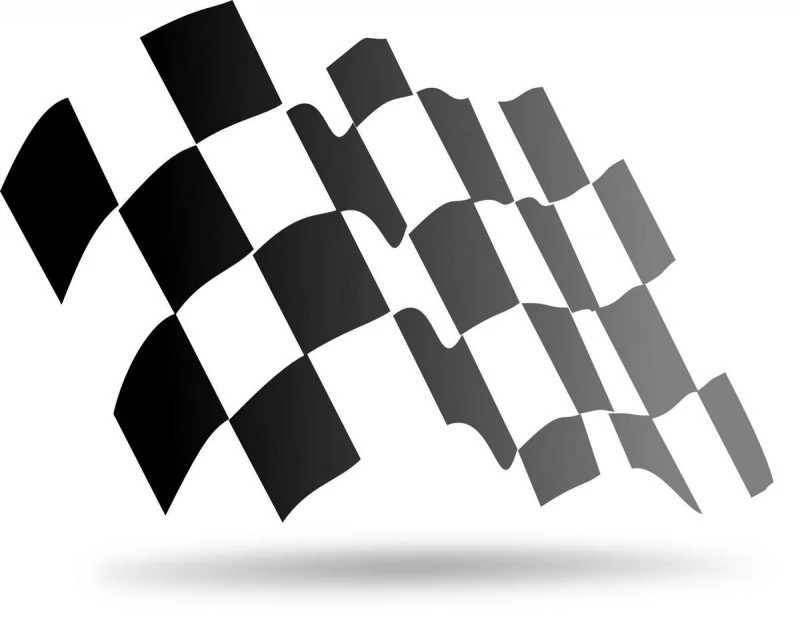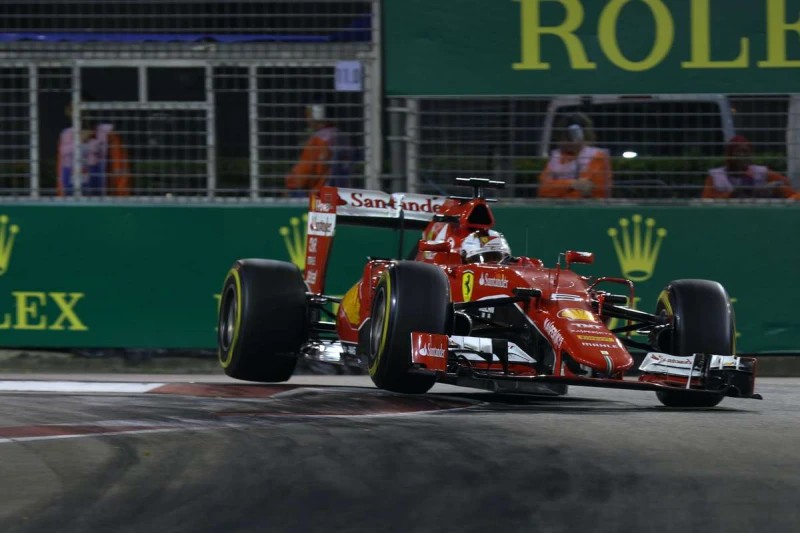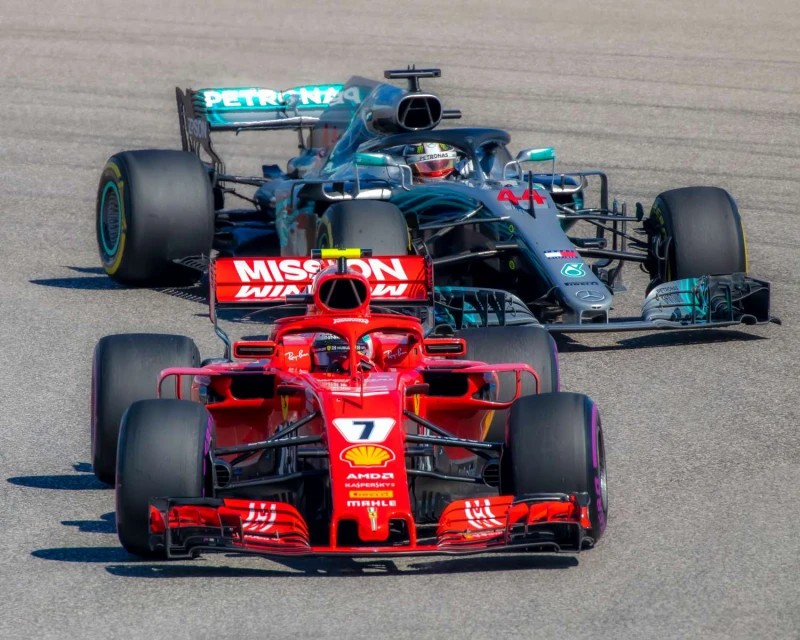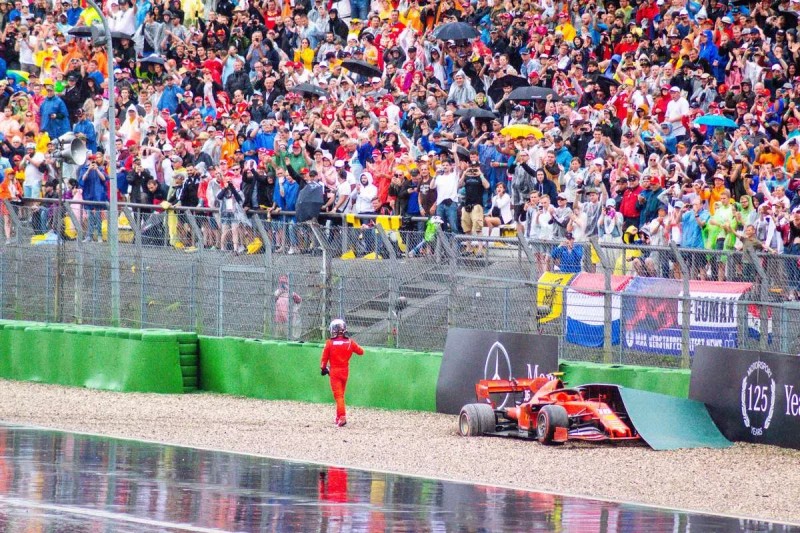Formula 1 and IndyCar have often been compared as both are elite open-wheel single-seater racing series. While many will call this pointless, even drivers that have been in both championships are doing it. So, what's our reason for creating this top ten list? Because it's fun! Plus, by facing them, we can appreciate them more and enjoy them for what they are. So while we're going to talk about the advantages of F1 vs IndyCar, you can also check our Top 10 Reasons Why is IndyCar Better Than Formula 1 list.
10. No Ovals
There's nothing like in Indy 500 in Formula 1, but fans don't mind it
Yes, this one is controversial, so this argument is at the bottom. You can point out that oval racing is very popular in the United States and highly unpredictable. You can say that as oval races are so different, this means that an IndyCar Series driver needs more skills to become a champion. Still, the cold fact is that most of the world doesn't care about them.
In a sense, that makes the discussion about ovals pretty pointless. Even if a study proved that oval racing is the best form of racing, that wouldn't make fans in Europe, South America, Australia, or Asia change their opinion. Since Formula 1 doesn't feature ovals, that automatically makes it better for most of the world.
9. Standing Start
Cold starts can be crazy
IndyCar has experimented with the standing start, but flying ones were always dominant, and it will stay this way. Rolling starts are safer, as there's no risk of stalling cars, but it's also tough to make massive overtakes. Formula 1 always employs standing starts, so you can hugely improve your position by the first corner.
However, Formula 1 also uses rolling starts. Whenever the safety car is on track, the race will continue in that way. Formula 1 and IndyCar are almost the same in that regard, although IndyCar tried controversial and highly-dangerous double-file restarts.
8. More Races
 More races is always a good thing for fans
More races is always a good thing for fansFormula 1 typically has a longer season than IndyCar. Therefore, it ends later and has significantly more races. In 2022, the IndyCar Series ran 17 races from February to September. Compare that to the 23 Grand Prix in Formula 1, from March to November.
Once the IndyCar season is over, fans have to wait about half a year before the next one begins. This doesn't mean that the quantity of F1 races has reduced the quality – it's probably all about the budget, as IndyCar is trying to cut costs wherever it can.
7. Night Races
 Night races in Formula 1 are possible even on street circuits like in Singapore
Night races in Formula 1 are possible even on street circuits like in SingaporeIndyCar introduced night races in 1997, long before Formula 1 did it. They represent a different challenge for the drivers, and further test their abilities, so it's no wonder they're so popular. However, night races in Formula 1 and IndyCar have one massive difference.
While Indycar runs night races only on oval tracks, Formula 1 has them on street and road courses. Again, it's all about the money, as it's easier to illuminate a few miles of oval tracks than much longer race tracks. Maybe things will change, but Formula 1 currently has a considerable advantage.
6. Teams and Their Individuality
 A typical battle between Ferrari and Mercedes F1 cars
A typical battle between Ferrari and Mercedes F1 carsTo cut costs, IndyCar teams have minimal (if any) choice of components, including the chassis and engine manufacturer. While this makes for cheaper and closer racing, it also kills the individuality of the teams. In Formula 1, organizations are free to develop every part of their cars, although they can buy engines. F1 teams are continually developing during the season, so the balance of power can change.
While IndyCar is dominated by small, private teams, F1 racing always had giants like Ferrari, Mercedes, McLaren, Renault, Toyota, Honda, and others. F1 fans have strong connections with their favorite teams, and if you've ever watched the race with Ferrari supporters, you know what we're talking about. There's no such passion in the world of motorsports!
5. Wet Weather Racing
Michael Schumacher was so dominant in this wet weather race
Everyone loves rain races. They're the great equalizer, but you can feel it more in F1, where the teams' disparity is more significant. Wet weather races are more common in F1, and the series is handling them better in a few ways. First, rain races are not allowed on oval tracks, as they are deemed too dangerous. While we can understand that, this makes IndyCar unreliable from a logistics standpoint.
If you compare rain races in both series, you'll see that they're more easily stopped in IndyCar. The reason is the quality of the drainage. F1 tracks are up to the highest standards so that drivers have less chance of running over standing water. We remember some fantastic F1 races in almost impossible conditions, such as the Spanish Grand Prix in 1996, brilliantly won by the dominant Michael Schumacher.
4. Formula 1 Is Way More Popular
 Formula 1 has a huge following
Formula 1 has a huge following
When comparing numbers of viewers on track and on the TV screen, Formula 1 destroys IndyCar. That's not a surprise, as Formula 1 is by far the most popular form of auto racing. This also means that Formula 1 generates more money, which allows it to further distance itself from IndyCar.
Therefore, F1 has all the resources to stay on top. Every open-wheel racing driver will continue dreaming about becoming a Formula One champion and reaching stardom far beyond what's possible in IndyCar.
3. Formula 1 Is Faster
Forrmula 1 one is so much faster than Indycar
Formula 1 represents the top of racing technology, as teams invest hundreds of million dollars in the development every year! As a result, F1 cars are always faster than IndyCar vehicles. In March 2019, Will Power won the qualifying session at Circuits of the Americas with 1'46.017. Six months earlier, Lewis Hamilton took pole in the F1 car on the same track with 1'32.250. That's a massive difference.
While IndyCars are faster on super ovals, F1 cars are much better balanced, so even the slowest one would easily dominate the best IndyCar teams. The gap will decrease or increase as the rules change, but it'll always be there.
2. Better Drivers
Ayrton Senna could pull off victories even in a weak car
Formula 1 drivers have enormous salaries, as the best of them earn almost ten times more than the IndyCar champions. This also means that Formula 1 easily attracts the best drivers (who are rarely women), including those from IndyCar like Mario Andretti. Arguably the greatest racing drivers of all time, including Ayrton Senna, Juan Manuel Fangio, Lewis Hamilton, and Michael Schumacher, are multiple Formula 1 champions.
Thanks to its feeder series, Formula 2 and Formula 3, Formula 1 also attracts the best young talent. Although many F1 drivers eventually end up in IndyCar, almost all of them do it because they no longer have room in F1 or they're near the end of their careers.
1. Better Tracks
Spa-Francorchamps is a long and unpredictable track
We've already mentioned that F1 tracks have better drainage, but they are also better racing tracks in general. While IndyCar has the iconic Indianapolis 500 or beautiful street circuit in St. Petersburg, Formula 1 offers much more. We'll mention Monte Carlo, Silverstone, Monza, Spa-Francorchamps, Suzuka, or Interlagos. If you are a fan of motorsport, you've heard about them!
We could also argue that these tracks are more varied than those in IndyCar. We have short, tight, and slow courses like Monte Carlo or Hungaroring, next to Monza, that's almost like a superspeedway. While there are a few modern stinkers, F1 tracks are the best you'll see in motorsport.
Hope you've enjoyed this fast trip, even though we're sure that petrolheads won't necessarily agree with us. But again, this top ten list should explain the F1 vs IndyCar philosophies and help us appreciate them both. We don't want them to become almost indistinguishable, but we doubt that's going to happen anyway!
What is your favorite thing about Formula 1? Are there elements of IndyCar you would like to see in it?
Cover photo: TopTens.fun/Midjourney